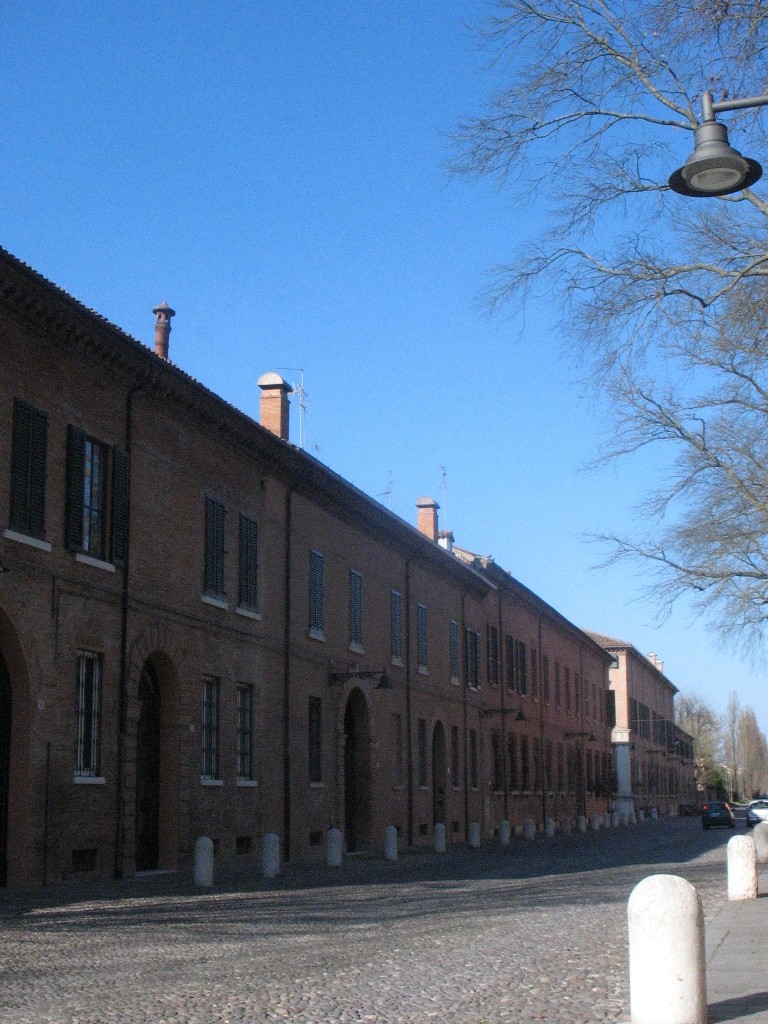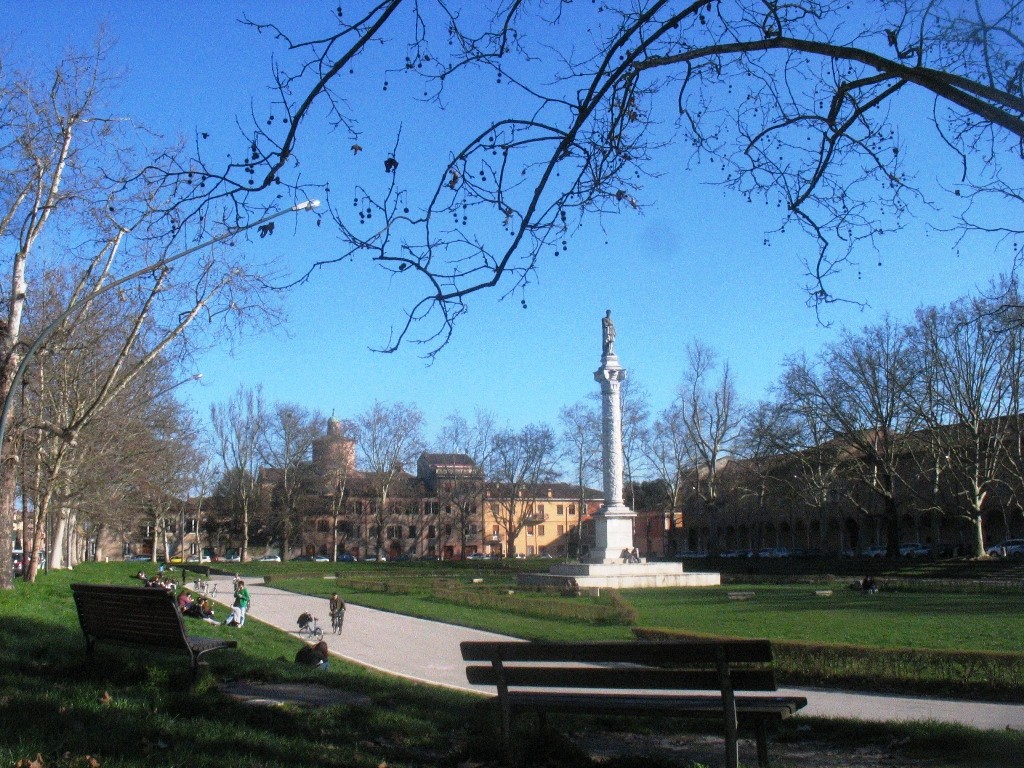The Renaissance area (2)
Going along Corso Ercole I d'Este, you will reach a major crossroads called Quadrivio degli Angeli, which represent the focal point of the Addizione Erculea. Indeed, it is where the two strategic axis of the urban expansion meet up. One is, of course, the street you have been walking on, while the other is Corso Porta Po - Porta Mare (part of which has now been entitled to Biagio Rossetti). However, what makes the place really unique is the importance of the buildings located there.

The most important of them is doubtlessly Palazzo dei Diamanti, which you will find on your left. The symbol of the Renaissance area of the town, this palace dates back to the end of the 15th century and, needless to say, was designed by Biagio Rossetti. In fact, it represents the real masterpiece of the Ferrarese architect. Its main peculiarity are the 8, 500 decorations in white marble, resembling diamonds due to the their shape, from which the palace takes its name. It is important to point out that the building regularly houses painting expositions of international fame, which usually attract visitors from various parts of Italy. However, it is also possible to visit the upper floor of the building, housing the town art gallery, preserving paintings mainly by Ferrarese artists such as Cosmè Tura, Dosso Dossi, Bastianino and Garofalo.

Right opposite Palazzo dei Diamanti is located Palazzo Prosperi Sacrati, another fine example of the architecture of the Renaissance, whose main feature of interest is the superb marble gate. Besides representing the finest example of monumental sculpture in town, it also offers a spectacular sight of Palazzo dei Diamanti. Standing next to the gate, indeed, it is possible to appreciate fully the genial decoration of the building, designed to be admired from an oblique perspective. Resuming the tour along Corso Ercole I d'Este, you will find that the environment surrounding the street, though still flanked by fine palaces, gradually becomes more rural.

Finally leaving Corso Ercole I d'Este to turn right into Via Certosa, you will then reach the town cemetery. Though it may seem strange to visit a graveyard, the Certosa of Ferrara is characterised by a valuable artistic heritage, including work of arts, colonnades and paintings. Actually, the place was originally a Cistercian monastery, built in 1452 and later included into the urban fabric with the Addizione Erculea. It was only during the 19th century that the space was destined to the funerary function.
Anyway, following Via Borso d'Este you will come out again in Corso Porta Mare, where it is worth taking a few steps on your right in order to admire Palazzo Massari. This 16th century palace may appear quite ordinary at first sight, but the inside is instead really wonderful, not only due to the several work of arts preserved there. The Museum Giovanni Boldini and the Museum of Modern and Contemporary Art are housed in the building, featuring principally paintings by two great Ferrarese artists, Giovanni Boldini and Filippo De Pisis. The former was active between the end of the 19th and the beginning of the 20th century, operating also for many years in Paris where he was appreciated as a portrait painter by many noble families, while the latter has lived during the first half of the 20th century, devoting himself to various kinds of art, among which the still-life painting. The palace looks out onto Parco Massari, the widest park of the city, where many Ferraresi usually gather to bask in the sun in fine weather days.

Back to Corso Porta Mare, you will go briefly along this avenue before crossing it and finally reaching Piazza Ariostea, another classic gathering place of the town. Originally called Piazza Nuova (to set it apart from the main square), it has not become a focal point for trading activities, preserving untouched, instead, its charm as a green area. A statue of the great literate Ludovico Ariosto is placed on a column in the middle of the oval lane which houses, at the end of May, the traditional Palio di San Giorgio. This traditional manifestation consists in a solemn parade, followed by the series of races which culminates in the spectacular horse race. The square, surrounded by a few interesting palaces, also houses some lively outdoor coffee houses and ice-cream parlours, where the Ferraresi often gather.
Photo gallery
Content available in other languages
- Italiano: L'area del Rinascimento
- Português: A área do Renascimento (2)
Want to have your own Erasmus blog?
If you are experiencing living abroad, you're an avid traveller or want to promote the city where you live... create your own blog and share your adventures!
I want to create my Erasmus blog! →




















Comments (0 comments)